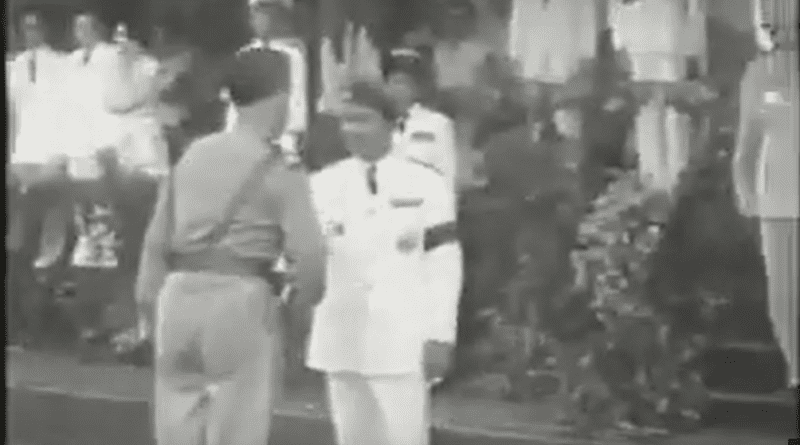On November 7, 1953, Jean Risterucci, the last French High Commissioner of Cambodia, agrees on behalf of the French state to demands for total independence for Cambodia.
On November 7, 2003, Khmer “Royal Ballet” was inscribed on the UNESCO List of the Intangible Cultural Heritage of Humanity.

On November 8, 1949, France granted Cambodia independent rights, but within the French Union, which was set up post World War II.
On November 9, 1953, Cambodia declares full independence from France.
“As the rain fell in torrents in Phnom Penh, King Norodom Sihanouk stood with the departing French High Commissioner, Jean Risterucci, and the Commander of French forces in Cambodia, General de Langlade, to watch a farewell march-past by French troops as national sovereignty returned to Cambodian hands…….
Historians will remain divided over the events that followed the achievement of Cambodian independence on November 9, 1953. Like so many other post-colonial settlements, the triumph of the moment was not destined to be followed by an untroubled future.”

On November 10, 1991, 45 Australian Army personnel under the command of Lieutenant Colonel Russell Stuart, were among the first to arrive in Cambodia as the advance units of United Nations Advance Mission in Cambodia. They set up communications in preparation for the main UNTAC force.
On November 10, 2009, National Assembly President Heng Samrin concluded a 6 day visit to the Russian Federation. On the agenda were discussions over around $1.5 billion of debts, owed by the then PRK government to the then Soviet Union taken in the 1980’s. The request had been made several times previously, and is still ongoing.
On November 11, 1918, World War One ended. The French Embassy estimated that about 20,000 Cambodians participated in the war as infantry and working behind the front lines. Two years earlier in November 1916 a circular to the French residents, written by senior resident in Cambodia François Baudoin stated: “I have been informed by various sources that certain correspondence sent to Cambodia by the indigenous volunteers serving in France are containing remarks that might cause discouragement in their families or create an adverse public spirit among the indigenous readers. It is unimportant if these reflections were inspired by a feeling of disgruntlement or by real demoralization, they in any case represent an element of the local public opinion that needs to be surveyed closely in the future.“
He asked the residents to investigate the nature of these remarks and their exact content and to confiscate such letters because of their “subversive nature” and send them to him.
To help lift the morale of the volunteers abroad the postal service allowed families to send their loved ones parcels of up to 1kg in weight to France for free. Such a benevolent gesture had interesting consequences, as a telegram from Paris to the Resident Superior attests, “Indochinese workers have received parcels containing opium which they sell – please inform the population that the import of opium to France is forbidden, close surveillance is being put in place and delinquents are liable to heavy penalties.“

On November 11, 1972, battle raged between Cambodian Republican FANK soldiers and North Vietnamese, as the forces fighting for the Khmer Republic made attempts to reopen vital route 5, North of Phnom Penh. The road had been closed for two months, forcing the government to ship rice and other food by air or down river (photo AP).

On November 13, 1913, Lon Nol was born in Kampong Leav, Prey Veng province to a family of mixed Khmer-Chinese descent. His father Lon Hin was the son of a Khmer Krom from Tay Ninh Province who later served as a district chief in Siem Reap and Kampong Thom, after making a name for himself ‘pacifying’ bandit groups in Prey Veng. His maternal grandfather was a Chinese immigrant from Fujian.

